20 Great Albums Turning 10 in 2020

2010 was an incredible year for new music. In fact, there’s a hefty chunk of 2010 albums on our best albums of the decade list. At the start of the 2010s, heavy-hitters like Kanye West, Robyn and Janelle Monáe released some of the best work of their careers. Meanwhile, indie rock was having a heyday, with bands like Arcade Fire, Vampire Weekend, The National, LCD Soundsystem, The Black Keys, Band of Horses and Beach House controlling big portions of the music narrative. On the folk side of things, Joanna Newsom and Sufjan Stevens both leaned into the chamber-pop side of their acoustic leanings and gave us some of the best music in their discographies. Paste was a working music publication through it all, and we were covering this music in real time. But isn’t it fun to look back and see which albums have truly endured? Here are 20 albums turning 10 in 2020 that we still love, listed in alphabetical order by artist.
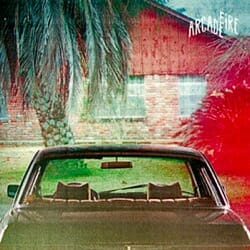 1. Arcade Fire: The SuburbsAt first listen, The Suburbs didn’t seem likely to bear the same iconographic heft as its predecessors. But swelling at 16 songs and an hour-plus runtime, it’s Arcade Fire’s most ambitious and concept-driven effort to date. Vast stretches feel tamped down, as if the album is sonically emulating its subject. Where past Arcade Fire songs built upwards, these unfurl flat and wide; the euphoric spikes that served as Funeral and Neon Bible’s beloved rallying points are strangely absent here, spaced farther and farther apart. Arcade Fire seems to be testing us, luring us down into the lowlands. A vein of emptiness and Beckett-esque waiting courses throughout; as so often in real life, these suburbs are a kind of purgatory with no exit in sight. But Chassagne’s vocal turn on “Sprawl II (Mountains Beyond Mountains)” redeems. A disco backbeat and massive keyboard bassline blast skyward, achieving the sort of anthemic release Arcade Fire has perfected, a moment of catharsis that’s been brewing for nearly the entire album. As any kid bored to death in such cul de sacs knows, the only cure from the suburbs can be found in “shopping malls [that] rise like mountains beyond mountains,” and three minutes in, the song finds its own escape, attaining a euphoric release. She’s found hope in the darkness, even if it’s just neon and dim street lights beckoning with their irresistable clarion call: “Come and find your kind.” —Andy Beta
1. Arcade Fire: The SuburbsAt first listen, The Suburbs didn’t seem likely to bear the same iconographic heft as its predecessors. But swelling at 16 songs and an hour-plus runtime, it’s Arcade Fire’s most ambitious and concept-driven effort to date. Vast stretches feel tamped down, as if the album is sonically emulating its subject. Where past Arcade Fire songs built upwards, these unfurl flat and wide; the euphoric spikes that served as Funeral and Neon Bible’s beloved rallying points are strangely absent here, spaced farther and farther apart. Arcade Fire seems to be testing us, luring us down into the lowlands. A vein of emptiness and Beckett-esque waiting courses throughout; as so often in real life, these suburbs are a kind of purgatory with no exit in sight. But Chassagne’s vocal turn on “Sprawl II (Mountains Beyond Mountains)” redeems. A disco backbeat and massive keyboard bassline blast skyward, achieving the sort of anthemic release Arcade Fire has perfected, a moment of catharsis that’s been brewing for nearly the entire album. As any kid bored to death in such cul de sacs knows, the only cure from the suburbs can be found in “shopping malls [that] rise like mountains beyond mountains,” and three minutes in, the song finds its own escape, attaining a euphoric release. She’s found hope in the darkness, even if it’s just neon and dim street lights beckoning with their irresistable clarion call: “Come and find your kind.” —Andy Beta
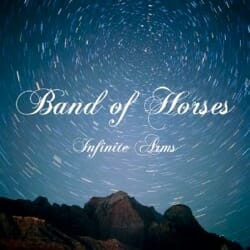 2. Band of Horses: Infinite Arms More muscular than The Avett Brothers or Iron & Wine, less concerned with experimentation than Wilco, and free of the folk prison occupied by Fleet Foxes, Band of Horses might have been the best traditional rock band in America not named My Morning Jacket back in 2010. On Infinite Arms, Frontman Ben Bridwell leads the Horses a little further out of Neil Young’s backyard. After lead track “Factory” enters the world amid a fanfare of faux strings, “Compliments” harkens back to the band’s wheelhouse with Bridwell shaking his tattooed forearms at the sky, questioning the existence of God in the air, righteous power chords at his side. But the crew relies less on guitar bombast this time out. Seemingly able to kick out a chug-a-lug stomper with absolute ease at this point, the best moments on Infinite Arms center around Bridwell’s growing confidence in the his deadliest weapon: his voice. After three albums, Band of Horses finally sounded comfortable being what they are: A rock band.—Bart Blasingame
2. Band of Horses: Infinite Arms More muscular than The Avett Brothers or Iron & Wine, less concerned with experimentation than Wilco, and free of the folk prison occupied by Fleet Foxes, Band of Horses might have been the best traditional rock band in America not named My Morning Jacket back in 2010. On Infinite Arms, Frontman Ben Bridwell leads the Horses a little further out of Neil Young’s backyard. After lead track “Factory” enters the world amid a fanfare of faux strings, “Compliments” harkens back to the band’s wheelhouse with Bridwell shaking his tattooed forearms at the sky, questioning the existence of God in the air, righteous power chords at his side. But the crew relies less on guitar bombast this time out. Seemingly able to kick out a chug-a-lug stomper with absolute ease at this point, the best moments on Infinite Arms center around Bridwell’s growing confidence in the his deadliest weapon: his voice. After three albums, Band of Horses finally sounded comfortable being what they are: A rock band.—Bart Blasingame
 3. Beach House: Teen Dream (2010)Teen Dream sounds just like Beach House and not at all like Beach House. On their first two albums, Victoria Legrand and Alex Scally created warm, lo-fi pop songs that favored subdued ambience over pronounced hooks, as if each song was designed to dissipate in the air between the speakers and your ears. By contrast, the duo’s Teen Dream songs are less hazy and more forceful—they actually project. Singing in a bold style that suggests a huskier-voiced Kate Bush, Legrand sounds androgynous on “Walk in the Park” and breathy on “Norway.” Scally, meanwhile, creates prickly arrangements full of narcotic guitars, reverbed piano and woozy synths that shimmer over spare, steady percussion. Dream is a go-for-broke collection that not only creates and sustains a hi-fi drowse-pop drama throughout its 10 beguiling songs, but comes across like a logical and gorgeous extension of all the band’s previous dreams. —Stephen M. Deusner
3. Beach House: Teen Dream (2010)Teen Dream sounds just like Beach House and not at all like Beach House. On their first two albums, Victoria Legrand and Alex Scally created warm, lo-fi pop songs that favored subdued ambience over pronounced hooks, as if each song was designed to dissipate in the air between the speakers and your ears. By contrast, the duo’s Teen Dream songs are less hazy and more forceful—they actually project. Singing in a bold style that suggests a huskier-voiced Kate Bush, Legrand sounds androgynous on “Walk in the Park” and breathy on “Norway.” Scally, meanwhile, creates prickly arrangements full of narcotic guitars, reverbed piano and woozy synths that shimmer over spare, steady percussion. Dream is a go-for-broke collection that not only creates and sustains a hi-fi drowse-pop drama throughout its 10 beguiling songs, but comes across like a logical and gorgeous extension of all the band’s previous dreams. —Stephen M. Deusner
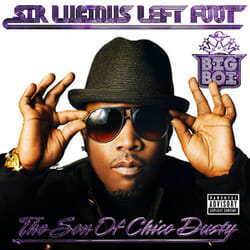 4. Big Boi: Sir Lucious Left Foot: The Son of Chico DustyBig Boi’s long-awaited post-Speakerboxxx solo album was poised to become the Chinese Democracy of hip-hop—numerous delays, a label change and a protracted production cycle left fans wondering if they weren’t witnessing Dr. Dre’s Detox play out all over again. But four years later, Big Boi finally dropped Sir Lucious Left Foot: The Son of Chico Dusty, a massive, ambitious album shot through with knee-knocking beats and deft lyrical touches from Outkast’s swagger champion. —Michael Saba
4. Big Boi: Sir Lucious Left Foot: The Son of Chico DustyBig Boi’s long-awaited post-Speakerboxxx solo album was poised to become the Chinese Democracy of hip-hop—numerous delays, a label change and a protracted production cycle left fans wondering if they weren’t witnessing Dr. Dre’s Detox play out all over again. But four years later, Big Boi finally dropped Sir Lucious Left Foot: The Son of Chico Dusty, a massive, ambitious album shot through with knee-knocking beats and deft lyrical touches from Outkast’s swagger champion. —Michael Saba
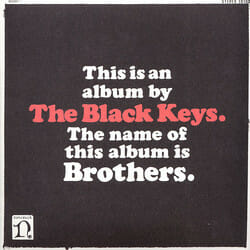 5. The Black Keys: BrothersYes, Danger Mouse produced a track (“Tighten Up”) for this blues-rock duo on its sixth album. But the name to note in the credits is mixer Tchad Blake, who gives the songs a swampy texture that nevertheless carves out individual space for each instrument. Guitarist Dan Auerbach and drummer Patrick Carney swing more loosely than usual, too, particularly on the Bo Diddley-gone-glam stomp “Howlin’ For You.” “The Only One” incorporates droning organ chords to nice effect. And Auerbach’s vocals on Jerry Butler’s “Never Gonna Give You Up,” are reminiscent of vintage Todd Rundgren. —Michaelangelo Matos
5. The Black Keys: BrothersYes, Danger Mouse produced a track (“Tighten Up”) for this blues-rock duo on its sixth album. But the name to note in the credits is mixer Tchad Blake, who gives the songs a swampy texture that nevertheless carves out individual space for each instrument. Guitarist Dan Auerbach and drummer Patrick Carney swing more loosely than usual, too, particularly on the Bo Diddley-gone-glam stomp “Howlin’ For You.” “The Only One” incorporates droning organ chords to nice effect. And Auerbach’s vocals on Jerry Butler’s “Never Gonna Give You Up,” are reminiscent of vintage Todd Rundgren. —Michaelangelo Matos
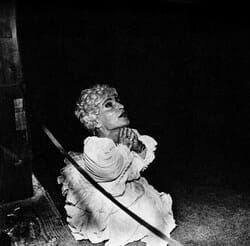 6. Deerhunter: Halcyon DigestIn the early 2010s, Deerhunter graduated, by degrees, from conjuring moods to writing proper songs, and their fourth album Halcyon Digest finds Bradford Cox and company strip-mining new aural territory and toeing the line between structure and abstraction. Opener “Earthquake” lowers a looping trio of sounds—a snare trill, a struck match, a tape noise swipe—into a deep sonic chasm where legions of guitars and dissolving vocals dominate. The synthesizer early in “He Would Have Laughed” soars into kaleidoscopic infinity, and the feather-light “Sailing” has just enough melody to stick in your head. “Coronado” injects jaunty jangle-pop with saxophone honks—then a first for this Atlanta band that’s as surprising as it is satisfying. This all makes Digest’s more conventional Deerhunter fare—like the Beatlesesque note-to-younger-self “Don’t Cry,” and the spectral, creamy “Basement Scene”—feel curiously out of place. —Raymond Cummings
6. Deerhunter: Halcyon DigestIn the early 2010s, Deerhunter graduated, by degrees, from conjuring moods to writing proper songs, and their fourth album Halcyon Digest finds Bradford Cox and company strip-mining new aural territory and toeing the line between structure and abstraction. Opener “Earthquake” lowers a looping trio of sounds—a snare trill, a struck match, a tape noise swipe—into a deep sonic chasm where legions of guitars and dissolving vocals dominate. The synthesizer early in “He Would Have Laughed” soars into kaleidoscopic infinity, and the feather-light “Sailing” has just enough melody to stick in your head. “Coronado” injects jaunty jangle-pop with saxophone honks—then a first for this Atlanta band that’s as surprising as it is satisfying. This all makes Digest’s more conventional Deerhunter fare—like the Beatlesesque note-to-younger-self “Don’t Cry,” and the spectral, creamy “Basement Scene”—feel curiously out of place. —Raymond Cummings
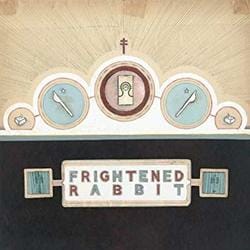 7. Frightened Rabbit: The Winter of Mixed DrinksOn each of its first three albums, Frightened Rabbit’s ambition grew. The Scottish band was so good at juxtaposing minimal passages with rousing dynamic swoops. But on The Winter of Mixed Drinks, their songs are sandbagged with sighing keyboards, screaming layers of melodious distortion, nested rhythms, choral harmonies—all the doodads that rock bands are liable to employ circa album number three. These more laborious arrangements occasion stirring moments on the epic scale of Coldplay or U2; this is burnished, stadium-sized, cloud-cover rock. The change is more one of scale than style. Hutchison’s earthy, inviting voice cuts through the vast instrumentation like a ray of sunlight. This is a different sort of intimacy: The Winter of Mixed Drinks is less of a breakup record than a post-breakup record, the more pathetic feelings having hardened into self-reliant moxie. Hutchison offers the usual wallowing introspection and off-kilter epiphanies (“She was not the cure for cancer,” he suddenly gleans midway through the album), but from a bird’s-eye view. On lead single “Swim Until You Can’t See Land,” which includes a string arrangement by labelmate Hauschka, the singer is a tiny, bobbing speck, way out past the waves, nothing but a sea of chiming guitars and swooning strings on all sides. Frightened Rabbit wrings a winning simplicity from all this august isolation. A cardiac pulse animates many of the songs, a mightily thwacking unison at the core of all the kaleidoscopic embellishment. Sprightly rhythms still canter through the drafty corridors. —Brian Howe
7. Frightened Rabbit: The Winter of Mixed DrinksOn each of its first three albums, Frightened Rabbit’s ambition grew. The Scottish band was so good at juxtaposing minimal passages with rousing dynamic swoops. But on The Winter of Mixed Drinks, their songs are sandbagged with sighing keyboards, screaming layers of melodious distortion, nested rhythms, choral harmonies—all the doodads that rock bands are liable to employ circa album number three. These more laborious arrangements occasion stirring moments on the epic scale of Coldplay or U2; this is burnished, stadium-sized, cloud-cover rock. The change is more one of scale than style. Hutchison’s earthy, inviting voice cuts through the vast instrumentation like a ray of sunlight. This is a different sort of intimacy: The Winter of Mixed Drinks is less of a breakup record than a post-breakup record, the more pathetic feelings having hardened into self-reliant moxie. Hutchison offers the usual wallowing introspection and off-kilter epiphanies (“She was not the cure for cancer,” he suddenly gleans midway through the album), but from a bird’s-eye view. On lead single “Swim Until You Can’t See Land,” which includes a string arrangement by labelmate Hauschka, the singer is a tiny, bobbing speck, way out past the waves, nothing but a sea of chiming guitars and swooning strings on all sides. Frightened Rabbit wrings a winning simplicity from all this august isolation. A cardiac pulse animates many of the songs, a mightily thwacking unison at the core of all the kaleidoscopic embellishment. Sprightly rhythms still canter through the drafty corridors. —Brian Howe
 8. Janelle Monáe: The ArchAndroidAt long, long last, Janelle Monáe dropped her full-length debut on the world in 2010. It only seems fitting to look back on the moment two years prior when we first encountered her: ”’This is a historic night,’ the emcee shouts to the crowd. Waving blue and white inspirational signs, the assembly chants louder. The excitement is palpable. The diversity of the crowd—young and old, black and white, male and female—is itself a sign of the hope offered. When the shouts reach a fevered pitch, the guest of honor emerges. Welcome Janelle Monáe. Sure, it was only a club show, but—Barack Obama allusions aside—it did feel historic. You can’t help but feel you’re watching the birth of a superstar. ‘I’ve just watched Prince, Michael Jackson, Anita Baker, Judy Garland and AC/DC all at once,’ a friend exclaims as we leave the show. When I first saw the singer, I told my wife that I’d just had a Jon Landau moment—I’d seen the future of rock ’n’ roll. Monáe—barely five-feet tall and backed only by a guitar player and drummer—delivered a performance unlike any I’d ever seen.”—Tim Regan-Porter
8. Janelle Monáe: The ArchAndroidAt long, long last, Janelle Monáe dropped her full-length debut on the world in 2010. It only seems fitting to look back on the moment two years prior when we first encountered her: ”’This is a historic night,’ the emcee shouts to the crowd. Waving blue and white inspirational signs, the assembly chants louder. The excitement is palpable. The diversity of the crowd—young and old, black and white, male and female—is itself a sign of the hope offered. When the shouts reach a fevered pitch, the guest of honor emerges. Welcome Janelle Monáe. Sure, it was only a club show, but—Barack Obama allusions aside—it did feel historic. You can’t help but feel you’re watching the birth of a superstar. ‘I’ve just watched Prince, Michael Jackson, Anita Baker, Judy Garland and AC/DC all at once,’ a friend exclaims as we leave the show. When I first saw the singer, I told my wife that I’d just had a Jon Landau moment—I’d seen the future of rock ’n’ roll. Monáe—barely five-feet tall and backed only by a guitar player and drummer—delivered a performance unlike any I’d ever seen.”—Tim Regan-Porter
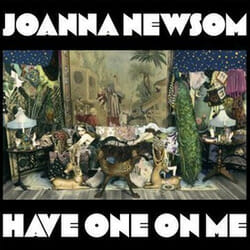 9. Joanna Newsom: Have One On MeJoanna Newsom’s Have One On Me was the finest two-hour, harp-driven, three-disc opus of the 2010s. Newsom—still your best possible icebreaker at a dinner party of hipsters, Renaissance Fair staffers and woodland creatures—released her last solo record, Ys, in 2006 to a response that ranged from gleaming to marry-me-I’m-begging-you. But if that sophomore album was a vivid glimpse into her weird little world, this sprawling sequel, conceived in flagrant defiance of conventional logic, is legitimately bananas. It’s like tumbling into her world and getting lost for weeks. Devotees thrilled to Newsom (who produced the record, with Jim O’Rourke intermittently mixing) emptying her quiver of tricks here, and the results are indeed glittering. The title track is a serpentine fairytale of harp, mandolin, piano and other elfin instruments. A jaunty piano opens the fantastically titled “Good Intentions Paving Company,” which briefly spirals off into diner pop. Best of all is gossamer showstopper “Baby Birch,” which will shut down your world for nine and a half minutes. The album is not for the fainthearted. It’s also not for anyone with a tendency to bristle at resolute self-indulgence. But over the course of the album, a weird thing happens: Her flutters and flourishes become comfortable, even at their saddest, and her babygirl voice takes on a grand assuredness. It’s difficult to imagine another situation in which plinking pixie sounds, recurrent madrigal noises and radiant folk poetry could be categorically described as honking huge, but for all its girth, Have One On Me is packed with magic. —Jeff Vrabel
9. Joanna Newsom: Have One On MeJoanna Newsom’s Have One On Me was the finest two-hour, harp-driven, three-disc opus of the 2010s. Newsom—still your best possible icebreaker at a dinner party of hipsters, Renaissance Fair staffers and woodland creatures—released her last solo record, Ys, in 2006 to a response that ranged from gleaming to marry-me-I’m-begging-you. But if that sophomore album was a vivid glimpse into her weird little world, this sprawling sequel, conceived in flagrant defiance of conventional logic, is legitimately bananas. It’s like tumbling into her world and getting lost for weeks. Devotees thrilled to Newsom (who produced the record, with Jim O’Rourke intermittently mixing) emptying her quiver of tricks here, and the results are indeed glittering. The title track is a serpentine fairytale of harp, mandolin, piano and other elfin instruments. A jaunty piano opens the fantastically titled “Good Intentions Paving Company,” which briefly spirals off into diner pop. Best of all is gossamer showstopper “Baby Birch,” which will shut down your world for nine and a half minutes. The album is not for the fainthearted. It’s also not for anyone with a tendency to bristle at resolute self-indulgence. But over the course of the album, a weird thing happens: Her flutters and flourishes become comfortable, even at their saddest, and her babygirl voice takes on a grand assuredness. It’s difficult to imagine another situation in which plinking pixie sounds, recurrent madrigal noises and radiant folk poetry could be categorically described as honking huge, but for all its girth, Have One On Me is packed with magic. —Jeff Vrabel
 10. Kanye West: My Beautiful Dark Twisted FantasyKanye West has always been on the tip of pop culture’s tongue and this is his most well-rounded endeavor. This is where he first plucked a quaint indie rock vocalist in Bon Iver’s Justin Vernon, weaved him masterfully into his own hip-hop fabric and vaulted the mixture of the two. The whole album is wrought with expansive productions from the sparkle of “All of The Lights” featuring Rihanna, to the beautiful balladry of “Blame Game” featuring John Legend. Kanye West’s persona elicits strong reactions, but MBDTF flashes the musical genius of pop culture’s most polarizing figure. —Adrian Spinelli
10. Kanye West: My Beautiful Dark Twisted FantasyKanye West has always been on the tip of pop culture’s tongue and this is his most well-rounded endeavor. This is where he first plucked a quaint indie rock vocalist in Bon Iver’s Justin Vernon, weaved him masterfully into his own hip-hop fabric and vaulted the mixture of the two. The whole album is wrought with expansive productions from the sparkle of “All of The Lights” featuring Rihanna, to the beautiful balladry of “Blame Game” featuring John Legend. Kanye West’s persona elicits strong reactions, but MBDTF flashes the musical genius of pop culture’s most polarizing figure. —Adrian Spinelli
 11. LCD Soundsystem: This Is HappeningOver the course of four proper full-length albums and a smattering of singles and compilations, LCD Soundsystem—the oft-one-man-show of New York DJ, producer and DFA Records co-honcho James Murphy—has become an increasingly sure bet. After 2002’s “Losing My Edge,” an eight-minute takedown of rock ‘n’ roll posturing, the band avoided novelty-act territory with a helping of self-skewering; Murphy dressed himself down almost more than anyone else, stripping away all traces of preening entitlement and pretense, readying himself for a three-album run that would build on—not trade on—his cutting wit. The records have a wry take on certain social graces, toying with the kids packing underground bars and the same kind of house parties that probably wound up blasting the songs. This Is Happening is, in all respects, LCD’s best album. There’s a remarkable sustained energy to this collection; its electronic textures thrum and shimmy, and wall after sonic wall is built up and torn down with impeccable precision. But there’s an odd tension throughout; Murphy sounds both all-in and like he’s keeping one eye on the exit—in no small part, surely, because he intended this album to be LCD Soundsystem’s last. It’s not a swan-song, exactly—that would require some degree of sentimentality and forced closure that seems wholly absent from Murphy’s world, plus it preceded the band’s rebirth in 2017—but it’s deliberate and no-nonsense; he doesn’t want to waste his time, or yours, or anyone’s. Instead, we get a handful of parting gifts: The insistently lovelorn “I Can Change,” featuring Murphy’s most oddly sophisticated vocal delivery to date; the percolating piss and vinegar of “Hit” and its record industry shrug-off; the skittering, spoken-word discourse, snide asides and comic-book chorus of “Pow Pow.” It would still be a shame to see LCD Soundsystem go—but you know, the coolest kids always ditch the party early. —Rachael Maddux
11. LCD Soundsystem: This Is HappeningOver the course of four proper full-length albums and a smattering of singles and compilations, LCD Soundsystem—the oft-one-man-show of New York DJ, producer and DFA Records co-honcho James Murphy—has become an increasingly sure bet. After 2002’s “Losing My Edge,” an eight-minute takedown of rock ‘n’ roll posturing, the band avoided novelty-act territory with a helping of self-skewering; Murphy dressed himself down almost more than anyone else, stripping away all traces of preening entitlement and pretense, readying himself for a three-album run that would build on—not trade on—his cutting wit. The records have a wry take on certain social graces, toying with the kids packing underground bars and the same kind of house parties that probably wound up blasting the songs. This Is Happening is, in all respects, LCD’s best album. There’s a remarkable sustained energy to this collection; its electronic textures thrum and shimmy, and wall after sonic wall is built up and torn down with impeccable precision. But there’s an odd tension throughout; Murphy sounds both all-in and like he’s keeping one eye on the exit—in no small part, surely, because he intended this album to be LCD Soundsystem’s last. It’s not a swan-song, exactly—that would require some degree of sentimentality and forced closure that seems wholly absent from Murphy’s world, plus it preceded the band’s rebirth in 2017—but it’s deliberate and no-nonsense; he doesn’t want to waste his time, or yours, or anyone’s. Instead, we get a handful of parting gifts: The insistently lovelorn “I Can Change,” featuring Murphy’s most oddly sophisticated vocal delivery to date; the percolating piss and vinegar of “Hit” and its record industry shrug-off; the skittering, spoken-word discourse, snide asides and comic-book chorus of “Pow Pow.” It would still be a shame to see LCD Soundsystem go—but you know, the coolest kids always ditch the party early. —Rachael Maddux
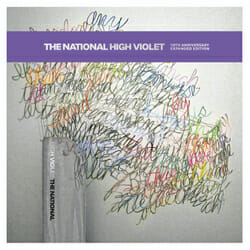 12. The National: High VioletThough he would later pen one of the most endearing familial love songs ever for his wife and child in the form of “I Need My Girl,” The National frontman Matt Berninger first addresses his daughter Isla on 2010’s High Violet, which was recorded and produced shortly after her birth. Berninger’s anxieties about becoming a father fueled album standout “Afraid Of Everyone.” “With my kid on my shoulders I try / Not to hurt anybody I like,” he sings. Berninger mostly avoided writing about fatherhood until 2013’s Trouble Will Find Me, but on High Violet his experiences as a parent were new and fresh—He feels the need to protect his family, defending them with his “orange umbrella.” However, when listening to rock music, Berninger doesn’t want to hear artists sing about their children (or so he said in this interview), but it sounds pretty great when he does it. —Ellen Johnson
12. The National: High VioletThough he would later pen one of the most endearing familial love songs ever for his wife and child in the form of “I Need My Girl,” The National frontman Matt Berninger first addresses his daughter Isla on 2010’s High Violet, which was recorded and produced shortly after her birth. Berninger’s anxieties about becoming a father fueled album standout “Afraid Of Everyone.” “With my kid on my shoulders I try / Not to hurt anybody I like,” he sings. Berninger mostly avoided writing about fatherhood until 2013’s Trouble Will Find Me, but on High Violet his experiences as a parent were new and fresh—He feels the need to protect his family, defending them with his “orange umbrella.” However, when listening to rock music, Berninger doesn’t want to hear artists sing about their children (or so he said in this interview), but it sounds pretty great when he does it. —Ellen Johnson
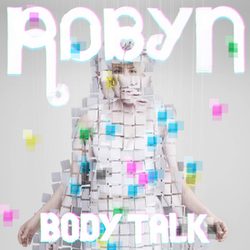 13. Robyn: Body TalkWe can’t talk about heartbreak in music without mentioning Robyn. Whether you need to sob into your pillow or sweat yourself into oblivion at the club, the Swedish pop diva is always there with the right remedy for your pain. Her latest album, Honey, is a stunning dancefloor masterpiece with a few heartbreak tunes mixed in with the electro bliss, but 2010’s Body Talk is home to arguably one of the greatest breakup songs of all time, “Dancing On My Own.” After an expertly placed appearance in a scene from the third episode of GIRLS, even more people recognized “Dancing On My Own” for what it really is: a juicy, devastating wave of catharsis. And upsetting as it is, Robyn’s recount of watching her ex-lover run away with someone else isn’t exclusive to the broken-hearted among us. Like Lena Dunham’s Hannah, sometimes you just need it as a boost, to remind yourself that you’re okay—maybe even better—on your own. —Ellen Johnson
13. Robyn: Body TalkWe can’t talk about heartbreak in music without mentioning Robyn. Whether you need to sob into your pillow or sweat yourself into oblivion at the club, the Swedish pop diva is always there with the right remedy for your pain. Her latest album, Honey, is a stunning dancefloor masterpiece with a few heartbreak tunes mixed in with the electro bliss, but 2010’s Body Talk is home to arguably one of the greatest breakup songs of all time, “Dancing On My Own.” After an expertly placed appearance in a scene from the third episode of GIRLS, even more people recognized “Dancing On My Own” for what it really is: a juicy, devastating wave of catharsis. And upsetting as it is, Robyn’s recount of watching her ex-lover run away with someone else isn’t exclusive to the broken-hearted among us. Like Lena Dunham’s Hannah, sometimes you just need it as a boost, to remind yourself that you’re okay—maybe even better—on your own. —Ellen Johnson
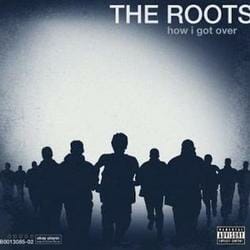 14. The Roots: How I Got OverThis is the most genre-bending album of The Roots’ 11 LPs. The album opens with Dirty Projectors vocalists Amber Coffman and Angel Deradoorian humming along to a lush piano, before drummer Questlove sparks a fully-formed instrumental revue. It’s the live hip-hop formula that the Roots have done better than anyone, since the group’s inception in the late ’80s. How I Got Over has features from Monsters of Folk, Joanna Newsom, John Legend, and more. It’s a comprehensive essay in the art of hip-hop as a legit musical endeavor. Questlove’s arrangements and the band behind him can go toe-to-toe with the best of ‘em, no matter what the genre. “Radio Daze” could be the album’s most accessible track, in incorporating background soul singers, live instrumentation, a jazz piano, Dice Raw’s silky hook and smooth flows from Blu and frontman Black Thought. This is just a flat-out display of beautiful music. —Adrian Spinelli
14. The Roots: How I Got OverThis is the most genre-bending album of The Roots’ 11 LPs. The album opens with Dirty Projectors vocalists Amber Coffman and Angel Deradoorian humming along to a lush piano, before drummer Questlove sparks a fully-formed instrumental revue. It’s the live hip-hop formula that the Roots have done better than anyone, since the group’s inception in the late ’80s. How I Got Over has features from Monsters of Folk, Joanna Newsom, John Legend, and more. It’s a comprehensive essay in the art of hip-hop as a legit musical endeavor. Questlove’s arrangements and the band behind him can go toe-to-toe with the best of ‘em, no matter what the genre. “Radio Daze” could be the album’s most accessible track, in incorporating background soul singers, live instrumentation, a jazz piano, Dice Raw’s silky hook and smooth flows from Blu and frontman Black Thought. This is just a flat-out display of beautiful music. —Adrian Spinelli
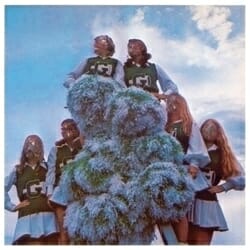 15. Sleigh Bells: TreatsTreats, the debut effort from noise-rockers Sleigh Bells, is the logical conclusion of the loudness war; it manages to challenge basic assumptions of how music can (and should) sound. You either buy the Brooklyn duo’s central conceit or you don’t: bombastic synth-rock for bombast’s sake, with mixing cranked so high your speakers sound like they’re about to combust. It’s a preposterous juxtposition—Alexis Krauss’ way-past-sweet vocals as the sugary glaze on Derek Miller’s gritty and serrated riffing and beats—until the soaring power chords of opener and single “Tell ‘Em” kick off the album with a thunderclap, and you barrel through a 32-minute sonic rollercoaster that’s totally, gloriously, devoid of subtlety and restraint. “Tell ‘Em” is a fantastic piece of pop, a tightly-wound dash down a cyberpunk Sunset Strip, and it’s only the first volley in Treats’ damn-the-torpedoes push towards sensory overload. “Kids” is a reverb-heavy rave-up that bleeds into “Riot Rhythm,” where martial drums crisscross with hair-metal guitar squeal as Krauss plays fast and loose with bratty, sing-song vocals. On “Infinity Guitars,” the melody erupts into a shatteringly loud catharsis of sleigh bells, bass beats and searing riffs, the kind of album highlight that sends your earbuds flying when you unexpectedly start headbanging. Treats is engrossing and urgent; Krauss and Miller toy with noise and listener expectations with Reznor-esque glee. But obsessing over the album as a technical triumph (though it certainly is) mostly misses the point because its greatest success is how effortlessly it taps into the intangible: Treats is just a whole goddamn lot of fun to listen to. It’s a supremely raw and visceral pop masterwork, one appropriate to rocking out with headphones on, windows-down bumping on car stereos or four-A.M. warehouse dance parties. —Michael Saba
15. Sleigh Bells: TreatsTreats, the debut effort from noise-rockers Sleigh Bells, is the logical conclusion of the loudness war; it manages to challenge basic assumptions of how music can (and should) sound. You either buy the Brooklyn duo’s central conceit or you don’t: bombastic synth-rock for bombast’s sake, with mixing cranked so high your speakers sound like they’re about to combust. It’s a preposterous juxtposition—Alexis Krauss’ way-past-sweet vocals as the sugary glaze on Derek Miller’s gritty and serrated riffing and beats—until the soaring power chords of opener and single “Tell ‘Em” kick off the album with a thunderclap, and you barrel through a 32-minute sonic rollercoaster that’s totally, gloriously, devoid of subtlety and restraint. “Tell ‘Em” is a fantastic piece of pop, a tightly-wound dash down a cyberpunk Sunset Strip, and it’s only the first volley in Treats’ damn-the-torpedoes push towards sensory overload. “Kids” is a reverb-heavy rave-up that bleeds into “Riot Rhythm,” where martial drums crisscross with hair-metal guitar squeal as Krauss plays fast and loose with bratty, sing-song vocals. On “Infinity Guitars,” the melody erupts into a shatteringly loud catharsis of sleigh bells, bass beats and searing riffs, the kind of album highlight that sends your earbuds flying when you unexpectedly start headbanging. Treats is engrossing and urgent; Krauss and Miller toy with noise and listener expectations with Reznor-esque glee. But obsessing over the album as a technical triumph (though it certainly is) mostly misses the point because its greatest success is how effortlessly it taps into the intangible: Treats is just a whole goddamn lot of fun to listen to. It’s a supremely raw and visceral pop masterwork, one appropriate to rocking out with headphones on, windows-down bumping on car stereos or four-A.M. warehouse dance parties. —Michael Saba
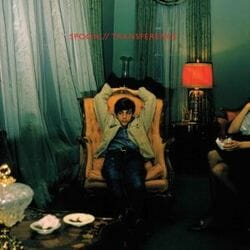 16. Spoon: TransferenceSpoon continued an impressive run of albums with its seventh album, Transference—more austere than its predecessors but just as scrappy. Jettisoning the horns and pervasive studio-as-instrument approach, the band hadn’t sounded this raw in more than a decade. An impassioned and unpredictable singer, Britt Daniel changes his approach on every song, shredding his vocal chords on the rough-textured “Written in Reverse” and peppering “Trouble Comes Running” with woos and oohs. He favors repetition as a means to reinforce and undermine his lyrics, slyly dropping out consonants from words and words from phrases. Singing in an R&B-ish falsetto on “Who Makes Your Money?” he puts so many different spins on the title phrase that by song’s end, it could mean anything or nothing at all. And while the bandmates sound like the veterans they are on Transference, Spoon brings to this new level the same prickliness and elusiveness that has informed all of its previous albums, and that has attracted devoted fans intent on parsing every word and note. Despite the success (or maybe because of it), Spoon is still making music deep in the mystery zone. —Stephen M. Deusner
16. Spoon: TransferenceSpoon continued an impressive run of albums with its seventh album, Transference—more austere than its predecessors but just as scrappy. Jettisoning the horns and pervasive studio-as-instrument approach, the band hadn’t sounded this raw in more than a decade. An impassioned and unpredictable singer, Britt Daniel changes his approach on every song, shredding his vocal chords on the rough-textured “Written in Reverse” and peppering “Trouble Comes Running” with woos and oohs. He favors repetition as a means to reinforce and undermine his lyrics, slyly dropping out consonants from words and words from phrases. Singing in an R&B-ish falsetto on “Who Makes Your Money?” he puts so many different spins on the title phrase that by song’s end, it could mean anything or nothing at all. And while the bandmates sound like the veterans they are on Transference, Spoon brings to this new level the same prickliness and elusiveness that has informed all of its previous albums, and that has attracted devoted fans intent on parsing every word and note. Despite the success (or maybe because of it), Spoon is still making music deep in the mystery zone. —Stephen M. Deusner
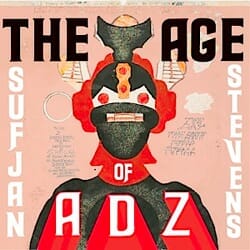 17. Sufjan Stevens: The Age of AdzAfter Illinois made Sufjan Stevens something of a household name in 2005, he seemed to flee from the spotlight, willfully sabotaging the momentum built with a trio of records, Michigan, Seven Swans and Illinois that were tied together by an orchestral-folk style—a sound that only occasionally peeks through on the much noisier Age of Adz. But looking back further, those three albums represent an unusual consistency in a career marked with experimentation, progression and, well, noise. In that light, The Age of Adz and the EP that preceded, All Delighted People, aren’t so much a departure as an amalgamation of all that’s come before—the chamber elements, the synthetic dissonance and the heart-rending lyrics. It’s as carefully orchestrated as The BQE, employing a series of movements and a vast array of instrumentation within even some of the shortest songs. Instead of straightforward vignettes tackling the human condition, the lyrics are more jumbled enigmatic pleas. While The Age of Adz has no single song that stirs me like the short stories of “Casimir Pulaski Day” and “The Predatory Wasp of the Palisades,” its music is as equally layered and its poetry is often more complex. It’s what you hope for from your favorite artists in your best moments—evolution, a little difficulty and, especially, something new. —Josh Jackson
17. Sufjan Stevens: The Age of AdzAfter Illinois made Sufjan Stevens something of a household name in 2005, he seemed to flee from the spotlight, willfully sabotaging the momentum built with a trio of records, Michigan, Seven Swans and Illinois that were tied together by an orchestral-folk style—a sound that only occasionally peeks through on the much noisier Age of Adz. But looking back further, those three albums represent an unusual consistency in a career marked with experimentation, progression and, well, noise. In that light, The Age of Adz and the EP that preceded, All Delighted People, aren’t so much a departure as an amalgamation of all that’s come before—the chamber elements, the synthetic dissonance and the heart-rending lyrics. It’s as carefully orchestrated as The BQE, employing a series of movements and a vast array of instrumentation within even some of the shortest songs. Instead of straightforward vignettes tackling the human condition, the lyrics are more jumbled enigmatic pleas. While The Age of Adz has no single song that stirs me like the short stories of “Casimir Pulaski Day” and “The Predatory Wasp of the Palisades,” its music is as equally layered and its poetry is often more complex. It’s what you hope for from your favorite artists in your best moments—evolution, a little difficulty and, especially, something new. —Josh Jackson
 18. Tame Impala: InnerSpeakerStimulating motifs are just one reason why you could argue that Innerspeaker is Tame Impala’s best album. There’s a palpable energy to songs like “Solitude Is Bliss,” where their classic psychedelic influences are elevated rather than scavenged. Kevin Parker became a gateway drug for many younger listeners into the world of ’60s psych-pop, and “Solitude Is Bliss” surely has to be responsible for the formation of at least a few dozen bands. Their swirling riffs and reverberating drums invite waves of melodic pleasure, and Parker’s heavily-warped vocals steer the ship. “You will never come close to how I feel,” Parker sings, alluding to the heavenly void that he ironically also places listeners in. —Lizzie Manno
18. Tame Impala: InnerSpeakerStimulating motifs are just one reason why you could argue that Innerspeaker is Tame Impala’s best album. There’s a palpable energy to songs like “Solitude Is Bliss,” where their classic psychedelic influences are elevated rather than scavenged. Kevin Parker became a gateway drug for many younger listeners into the world of ’60s psych-pop, and “Solitude Is Bliss” surely has to be responsible for the formation of at least a few dozen bands. Their swirling riffs and reverberating drums invite waves of melodic pleasure, and Parker’s heavily-warped vocals steer the ship. “You will never come close to how I feel,” Parker sings, alluding to the heavenly void that he ironically also places listeners in. —Lizzie Manno
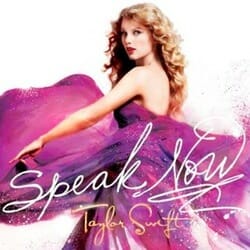 19. Taylor Swift: Speak Now
19. Taylor Swift: Speak Now
On Speak Now, Swift’s third full-length, she whispers her secrets into the eager ears of millions. Like Fearless, she’s still telling you about the boy who broke her heart and what she would have said if only she’d had the chance. This time, though, the boys are superstars and those imaginary conversations aren’t taking place in high school hallways. Swift was growing up, and her lyrics were too. You see hints of it on songs like “Mean,” where she boldly quips to her critics, “All you are is mean/ And a liar/ And pathetic/ And alone in life.” And on “Dear John,” where she laments her John Mayer tryst with a wizened “I should have known.” Perhaps she should have. But it’s that earnestness, simplicity and willingness to over-share that has, in part, earned Swift a legion of best friends—not to mention all the platinum albums, Grammys and a fistful of Number One songs. Of course, it’d be foolish to ignore Swift’s spot-on pop sensibilities. At its best, her songwriting stands as a shining example of Top 40 music—full of cinematic build-ups and addictive repeatability. On Speak Now, Swift is strongest when she lets her country roots shine through. Both “Mine” and “Mean,” are examples of her ability to craft instantly catchy hits. —Liz Stinson
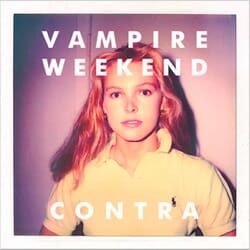 20. Vampire Weekend: ContraVampire Weekend’s debut cartwheeled gleefully from one infectious musical idea to the next, seducing listeners with a syrupy-sweet cocktail of Afro-pop, squeaky-clean ’60s surf rock and harpsichord passages that nodded at Mark Mothersbaugh’s playful compositions on Wes Anderson soundtracks. It was hard to listen to that first batch of tunes without sensing vast stores of glittering pop left to mine in the endlessly forking creative arteries beneath the band’s goofy, cardigan-wrapped exterior. On their second LP, the youngsters didn’t disappoint. Contra opener “Horchata” displays a caliber of pop songcraft and melodic intuition that gives The Shins’ James Mercer a run for his harmony, and the feathery lightness of lead singer Ezra Koenig’s voice allows him to indulge fluttering melodies that would sink under the weight of more overbearing pipes. “White Sky” dances along with skittering keyboard arpeggios and a refrain of sweeping falsetto “oohs” that beg for spontaneous crowd karaoke. And Contra’s most indelible cut, the sublimely arranged and lyrically evocative “Taxi Cab,” adopts an emotional vulnerability and depth that Vampire Weekend’s darker musical cousins The Strokes always seemed too fashionable to plumb. —Jason Killingsworth
20. Vampire Weekend: ContraVampire Weekend’s debut cartwheeled gleefully from one infectious musical idea to the next, seducing listeners with a syrupy-sweet cocktail of Afro-pop, squeaky-clean ’60s surf rock and harpsichord passages that nodded at Mark Mothersbaugh’s playful compositions on Wes Anderson soundtracks. It was hard to listen to that first batch of tunes without sensing vast stores of glittering pop left to mine in the endlessly forking creative arteries beneath the band’s goofy, cardigan-wrapped exterior. On their second LP, the youngsters didn’t disappoint. Contra opener “Horchata” displays a caliber of pop songcraft and melodic intuition that gives The Shins’ James Mercer a run for his harmony, and the feathery lightness of lead singer Ezra Koenig’s voice allows him to indulge fluttering melodies that would sink under the weight of more overbearing pipes. “White Sky” dances along with skittering keyboard arpeggios and a refrain of sweeping falsetto “oohs” that beg for spontaneous crowd karaoke. And Contra’s most indelible cut, the sublimely arranged and lyrically evocative “Taxi Cab,” adopts an emotional vulnerability and depth that Vampire Weekend’s darker musical cousins The Strokes always seemed too fashionable to plumb. —Jason Killingsworth







































